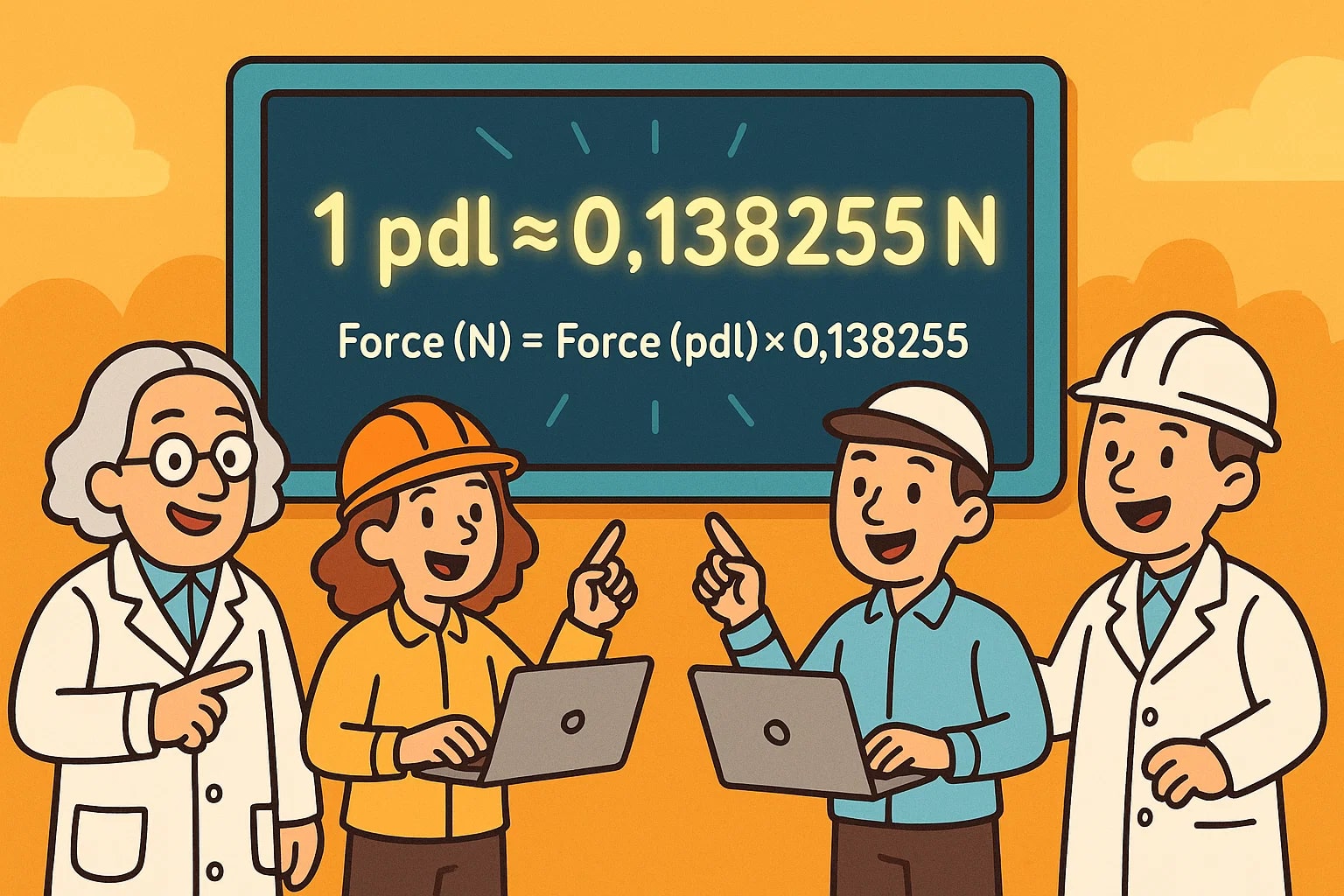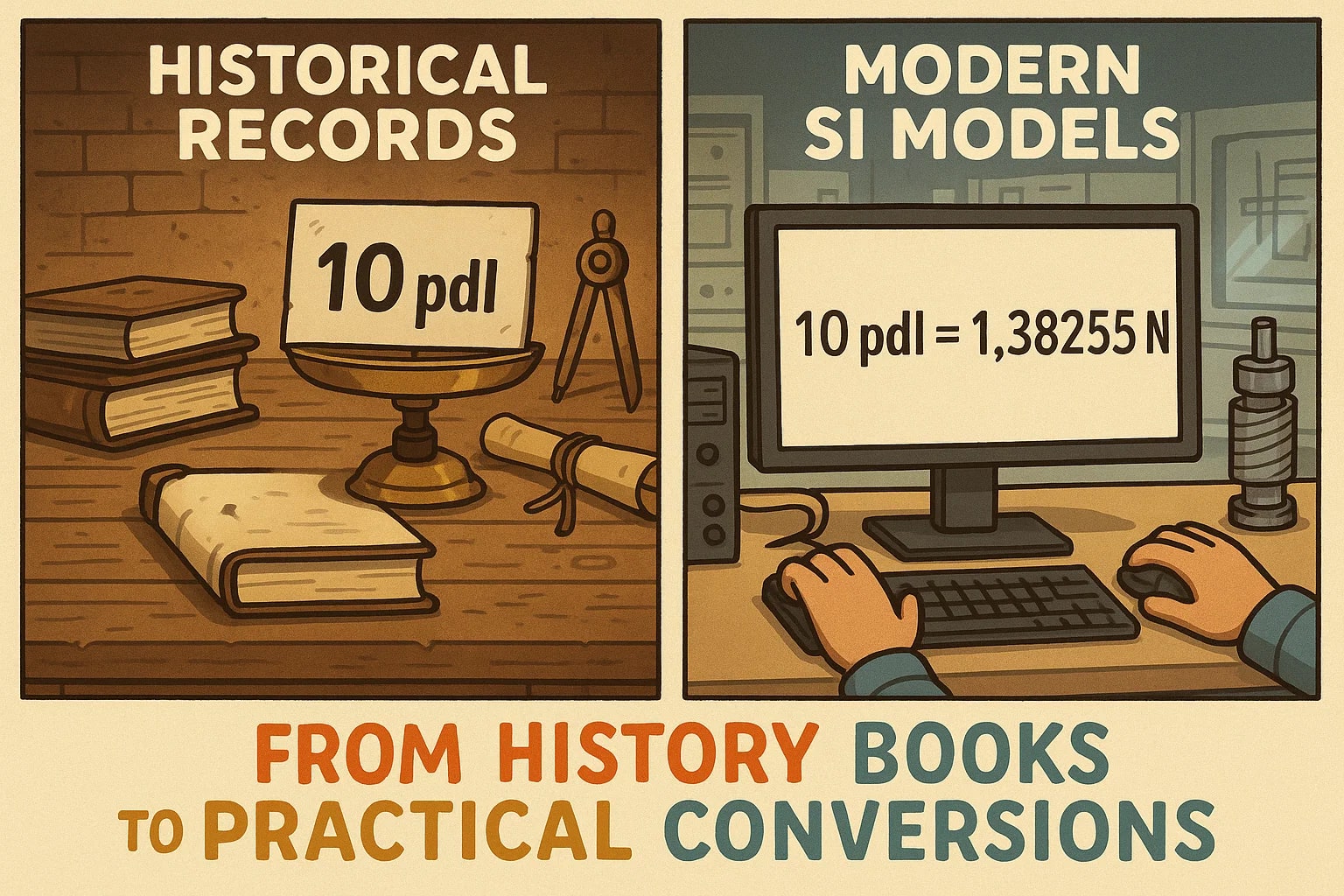Poundal to Newton – How to convert pdl to N
The poundal might sound like a relic from an old physics textbook, but it still shows up in some engineering and historical contexts. Converting it to newtons — the SI unit of force — is straightforward, but understanding where these units come from can help you make sense of the numbers.

The poundal (pdl): a legacy unit of force
The poundal is a foot–pound–second (FPS) system unit of force. It’s defined as the force required to accelerate a one-pound mass by one foot per second squared (1 lb·ft/s²). Developed in the late 19th century, it was used primarily in the United States and Britain before SI units became dominant.
Though rarely used in modern calculations, you may still encounter the poundal in older engineering documents, academic problems, or legacy machinery manuals.
The newton (N): today’s global standard
The newton is the SI unit of force, representing the force needed to accelerate 1 kg by 1 m/s². It’s used across every branch of science and engineering, making it the universal standard.
Because the poundal is based on imperial measures and the newton on metric, converting between them bridges two worlds — the old FPS system and the modern SI framework.
Converting pdl to N
One poundal equals a small fraction of a newton:
1 pdl ≈ 0.138255 N
Force (N) = Force (pdl) × 0.138255
Example calculation:
If a force gauge shows 50 pdl, how many newtons is that?
50 × 0.138255 = 6.9128 N.
So, 50 pdl ≈ 6.91 N.
Need to handle other unit conversions? Visit Jetcalculator’s Force Converter or use the all-in-one Conversion tools.
Did you know?
-
The poundal was introduced by British engineer James Thomson in the 1870s to bring a consistent unit of force to the FPS system.
-
One poundal equals the weight of about 14.1 g under Earth’s gravity — roughly the mass of two AA batteries.
-
While largely obsolete, poundals are still referenced in ballistics studies and in some U.S. textbooks that stick to FPS-derived units.
-
Many early steam engine specifications included force in poundals, before newtons and pound-force became the dominant terms.
-
Converting to newtons simplifies collaboration between teams worldwide, as nearly all modern engineering and physics work uses SI units.
From history books to practical conversions
Though the poundal has faded from mainstream science, it remains a useful bridge when working with older documents or equipment. Some fields, like certain arms testing or historical engineering research, still list force in poundals, meaning conversions to newtons are often necessary to make sense of the data in modern contexts.
By converting to newtons, engineers and researchers ensure results are easy to integrate into today’s SI-based models and calculations, avoiding confusion between unit systems.

A quick way to keep results consistent
The poundal belongs to a bygone era of measurement, but you’ll still see it pop up in specific cases. Converting to newtons keeps your work standardized, whether you’re deciphering an old technical drawing or comparing legacy data to new measurements.
For fast, accurate results, use Jetcalculator’s Conversion tools or the dedicated Force Converter whenever you’re working across FPS and SI systems. With a single conversion, your data becomes clear, consistent, and ready for modern applications.

